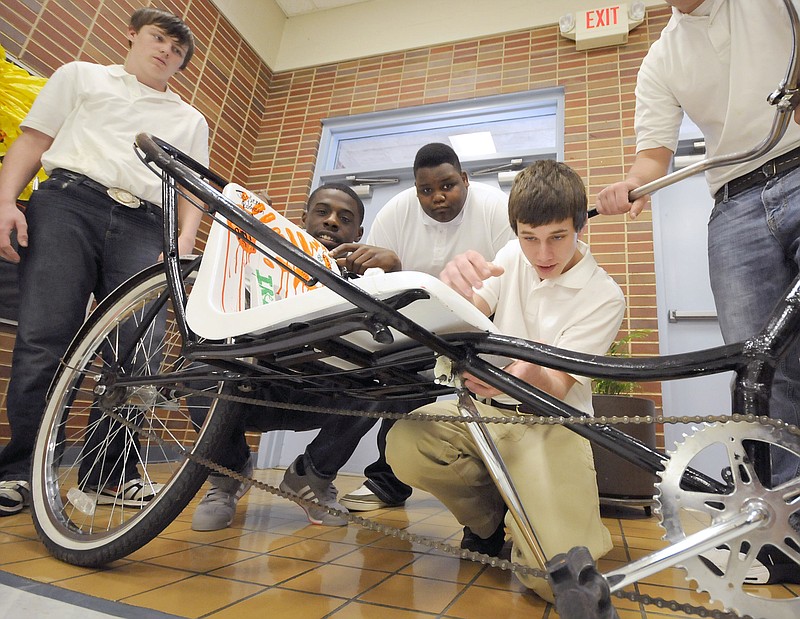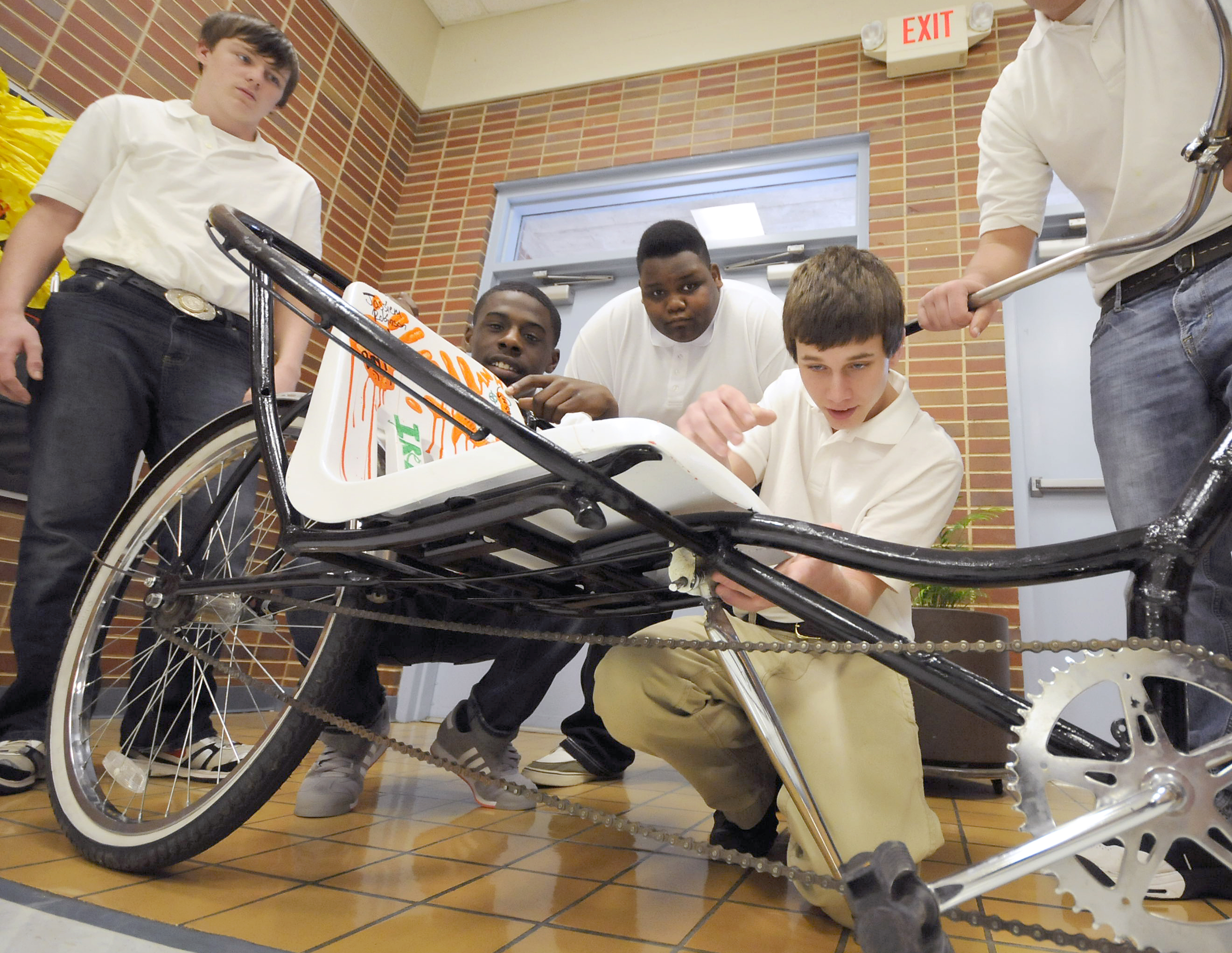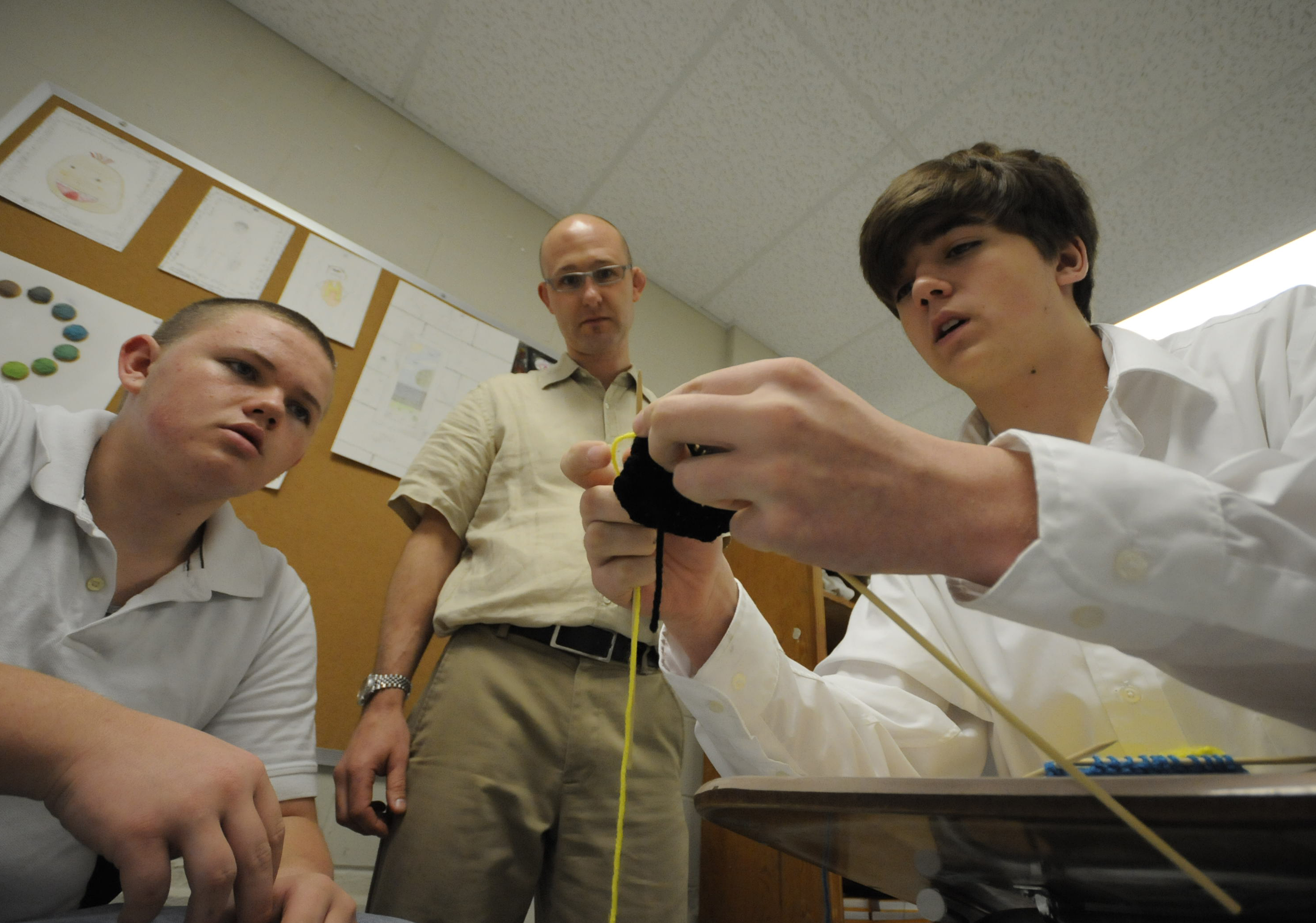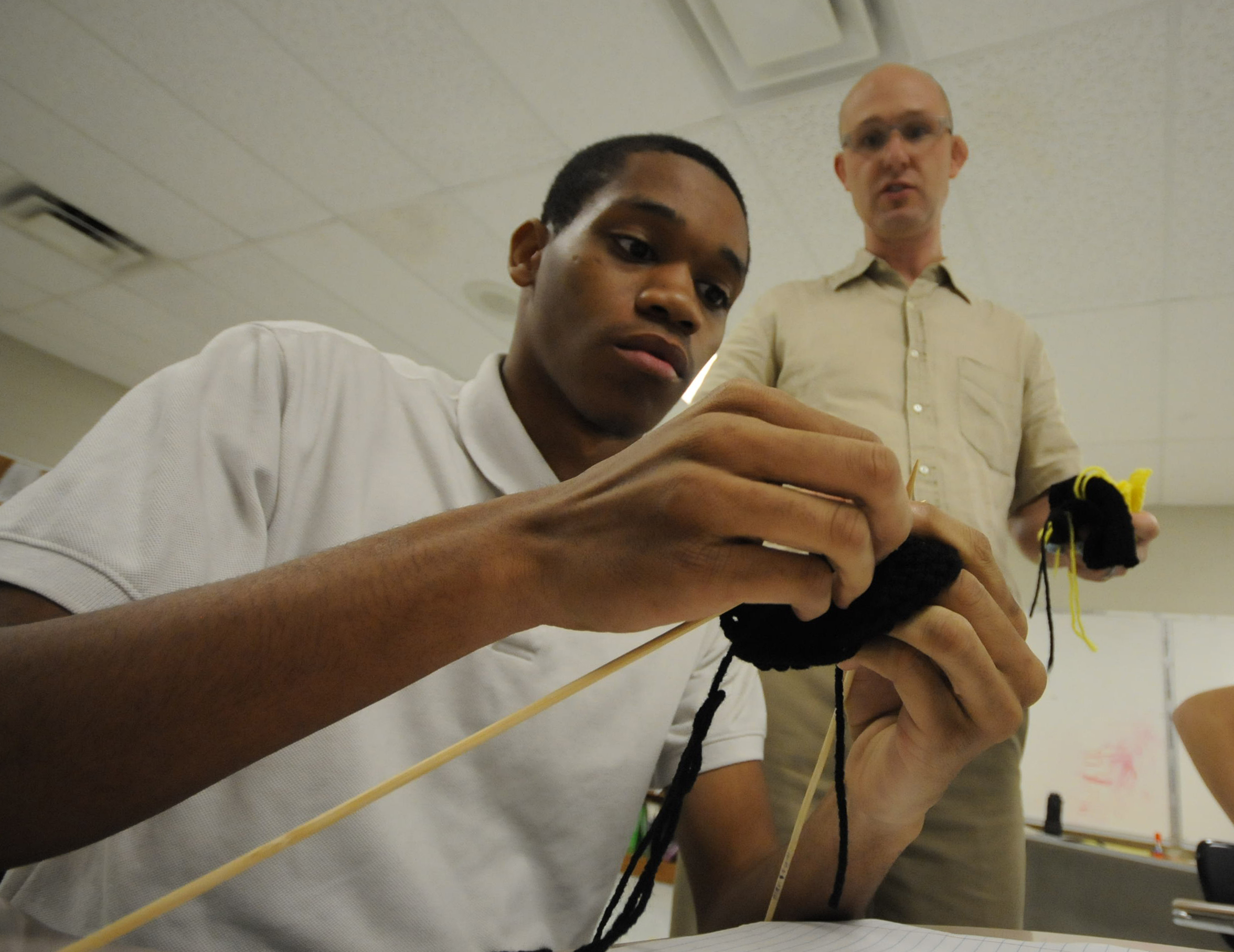One wall is lined with self-portraits showing students' struggles with good and evil. Across the hall hang pieces of poetry with titles such as "The System," "Without My Father" and "Get a Hold of Life."
On the self-portrait wall, a bright-red papier-maché mask in the shape of a heart belongs to 15-year-old Toriq Johnson. The heart is bleeding as a small window to the inside shows a timer ticking down to 00:01.
"As the time decreased, it started to bleed out because love wasn't found," Toriq said. "That's just how I was feeling at the time."
Teens like Toriq are considered the bad boys, the worst-behaved in Hamilton County Schools, some say. Students from sixth through 12th grade find themselves at Washington Alternative Learning Center because of behavioral problems such as drug use or violence against teachers and students at other schools.
But it's teenagers like Toriq who are finding reprieve from their own tumult and thriving in a new art class.
Art, along with creative writing, has given these students an expressive outlet, teachers say, and that creative avenue has changed the outlook and attitudes of many students, some of whom carry heavy burdens spawned from poverty, addiction and family and social problems.
The arts and writing programs now have some of these students openly displaying their emotions and facing the very problems that put them in Washington.
"The art really brings it out of the students," said Principal Rodney Knox.
In Joshua Coleman's art classroom, five teenage boys sit, their fingers fast at work knitting small squares of fabric. They're chatting quietly, but remain focused. They slouch in their desks, heads down, eyes at their work. Some carry their projects around class-to-class, keeping their hands busy through other lessons.
These are the same students who are searched by an armed officer before entering school each day.
Sixteen-year-old Andrew Holt said he was testy about knitting at first. But, he said it's grown on him.
"It's pretty cool once you're done and you've made something," he said.
But, he said a bunch of guys sitting around knitting probably wouldn't happen at Soddy-Daisy High School, the school he's set to return to in January.
"You wouldn't be able to get away with that," he said.
Coleman was introduced as Washington's art teacher in the fall of 2010. He had almost no supplies, mostly those donated by an art teacher at Loftis Middle School. But the students needed little convincing. Sure, one or two said there was no way they'd never do something as domestic as knit.
Then they tried it.
"I'm noticing the kids that find themselves in this environment have a creative mind," Coleman said. "They think outside the box."
But before the art class, students had little means of cretitve expression. Washington has no physical education or music program for its population of students, which this week sat at about 75. That number fluctuates as students go in and out of their regular schools.
And the students aren't just drawing or painting. They've worked on 3-D art pieces and even built their own oversized bicycle.
"It's visual art," Toriq said. "We build stuff. There's more to it."
Coleman brought in an old beaten-up chair and some tools, then told his students to take that pile of nothing and make something out of it. Using a welder and odds-and-ends parts, the students eventually turned it into an "artbike sculpture."
"It wasn't even supposed to be a bike," said 14-year-old Kiefer Scott. "It was supposed to be a chair. But that's what it turned into."
Washington is a school that relies on structure and order. Its halls, pristine as a hospital, remain nearly silent during class time. English teacher Jennifer Woods said the art program might have something to do with that.
She said she used to spend a lot of time asking kids to sit down and be quiet. The students were stewing with energy, she said.
"I don't really have to say that anymore," she said "Now, through the arts, they're able to express that energy."
The creative outlet also has made students more open in her class, she said. After sharing themselves through visual arts, students were more willing to do the same through poetry projects.
"I could never have taught poetry before," she said.
She allowed students to speak their poetry aloud, either words alone or set to music. One student even recorded a CD with his poem titled "I Grew Up Too Fast."
"There are so many kids out there that are talented and don't have a way to express themselves," Woods said.
The calming effect of artistic expression is not a new concept. But most schools don't necessarily view art as therapeutic, said Karla Riddle, director of innovative programs and fine arts for Hamilton County Schools. Art is usually taught based on standards and curriculum, but at Washington, Coleman has found a way to do both, Riddle said.
"With what he does with the kids, I think a lot of them see it as therapy," she said. "It's a way to express themselves."
Some of Washington's students had never taken art classes. But no matter their level of expertise, Riddle said, many can find meaning in creating their own work. She hopes to introduce a music program at the school to serve a similar function.
"You give kids a chance to be creative and it opens up the world," she said.



